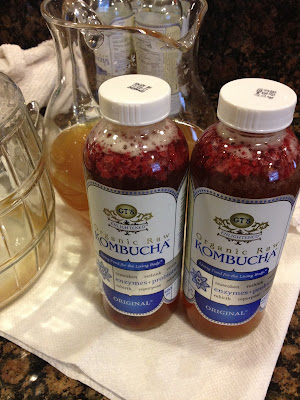Two things:
1) I've been absent from this blog for 2 years. WHAT?! how does life do that to me? So much has happened. So very much. I just couldn't give this any time. I will address and share what has gone on at some point, because it's part of our journey, and I want to be honest about it. Grace, y'all. That's all I have to say right now. My heart has been to share so much and support some friends tackling health and diet changes, so I've thought about doing posts on here but just haven't. I've felt held back from posting because I felt the need to explain myself and give details and all that jazz...but I'm to the place now where I just say "hey, I'm here and I like broccoli soup". Which brings me to #2.
2) I like broccoli soup. No, I LOVE broccoli soup. I almost cried when we finished it with lunch today. I have never cared for a blended vegetable soup (except carrot soup) much, but this changed all that! So I decided to post it on here. Random. Yep. That's me. :-) 

That doesn't look very impressive...but I'm not a photographer, and it's just a cup of broccoli soup. But I love this soup and I feel like I have to have a picture to put up a recipe. So that's what y'all get. But really, this soup is like dessert to me I love it so much. Ok here we go...
Broccoli Soup Recipe {GAPS, paleo/primal}
Ingredients:
1-2 tbsp fat of choice (ghee, butter, lard, tallow, coconut oil)
1/2 - 1 cup chopped onion
1 lb broccoli florets (I use frozen)
1 quart chicken meat stock or bone broth
1 stick (1/2 cup) grass fed butter (you can make it without this if you can't use butter, but it will just be a little less, you know, yummy buttery)
1/2-1 tsp ground nutmeg (we love the full tsp, but you might want to start with less and add to taste)
Salt, to taste
1/2 - 1 cup Coconut milk, optional
Directions:
Sauté Onion in fat of choice (skip this step if on first few stages of intro and simply boil/simmer the onion in broth for 5-7 minutes) for 5-7 minutes. (Also, the soup is fantastic without the onions if you want to skip them or just need to skip them to save time - we've done it!)
Add broccoli and broth. Bring to a boil and simmer until broccoli is tender (well cooked for early intro, to your liking after you have introduced less cooked broccoli).
Add salt (amounts vary based on the kind of salt you use - we use about 2 tsp of the coarse celic sea salt), nutmeg (start small and add to your taste), butter, and coconut milk, if using. (If on GAPS intro, adjust these ingredients based on stage of GAPS intro).
Blend (I use my vitamix for the whole batch) to your liking - I prefer mine not completely velvety smooth. I like to have tiny pieces in it here and there. Taste and add more salt or nutmeg as needed.
I hope you enjoy it! My husband and I LOVE this soup but it's not my boys' favorite. I think they're crazy. :-) ... okay, change that. They had it with lunch today and they both declared they really liked it. Silly boys. :-) and I hope to be back to posting here more often!

















